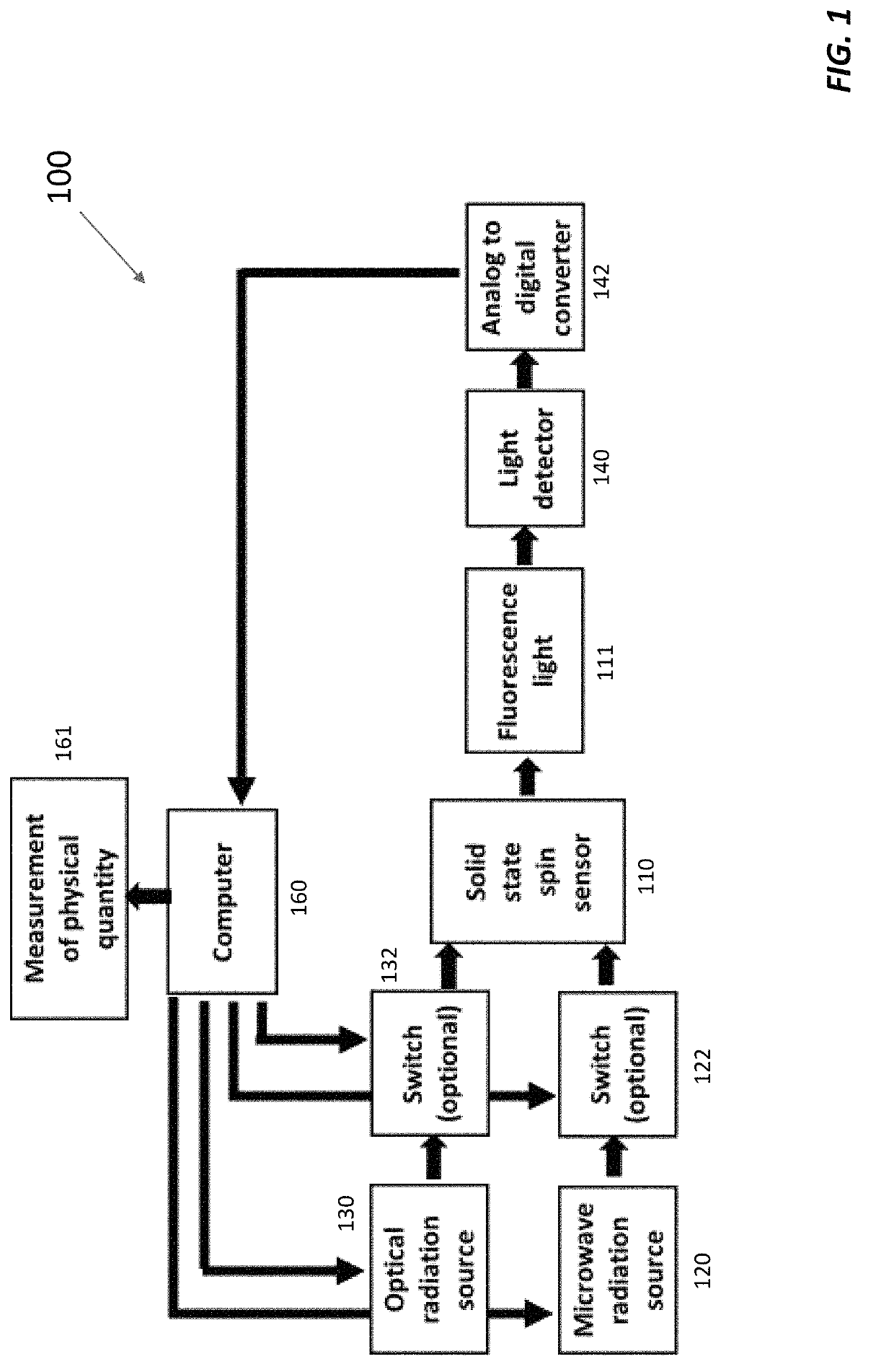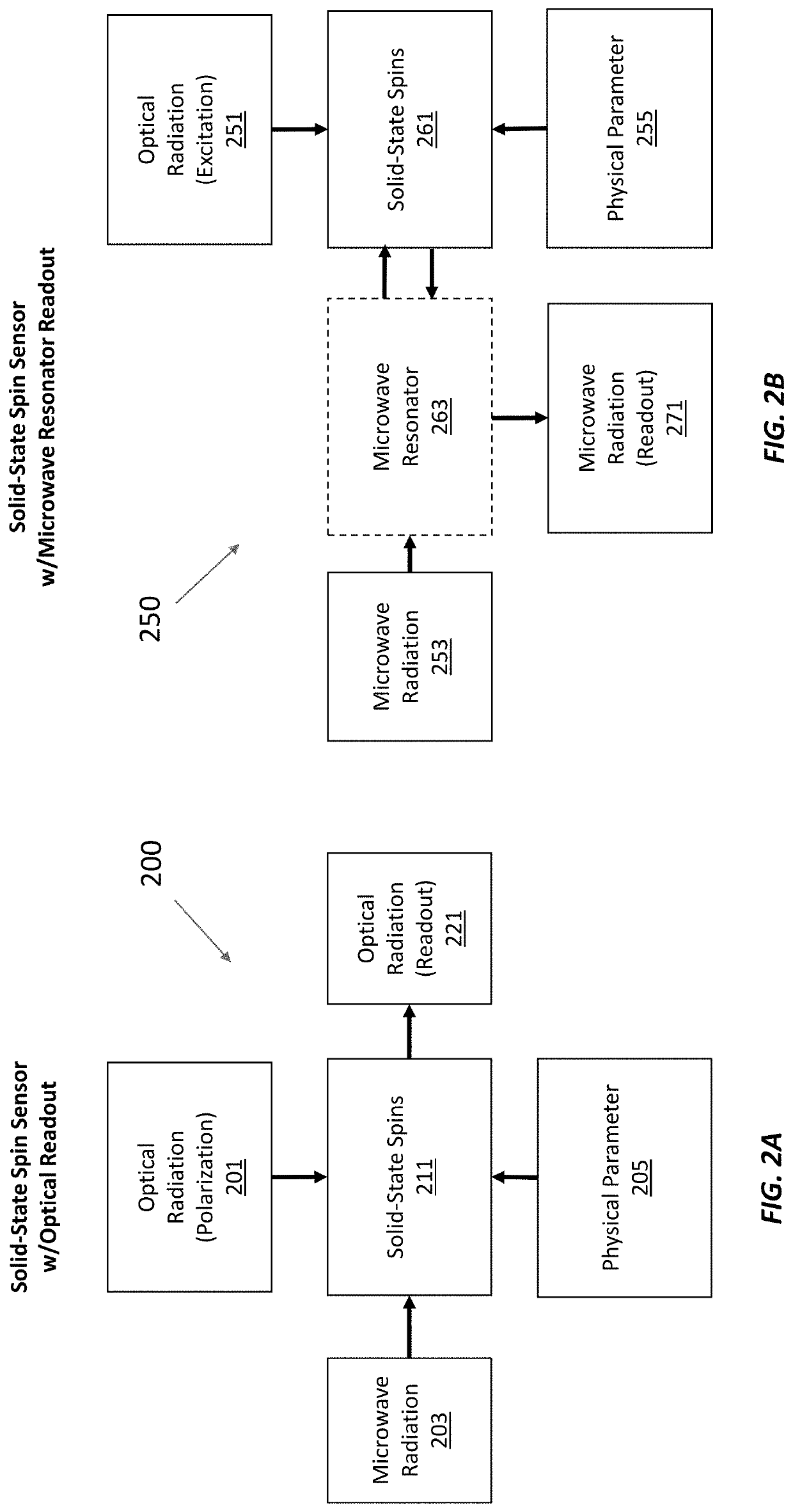Microwave resonator readout of an ensemble solid state spin sensor
a solid state spin sensor and microwave resonator technology, applied in the direction of magnetic property measurement, using reradiation, instruments, etc., can solve the problems of low readout fidelities (f1) of fluorescence-based spin-center-defect measurement, high cost, and high cost, so as to reduce the input microwave radiation and enhance the interaction of spin center defects
- Summary
- Abstract
- Description
- Claims
- Application Information
AI Technical Summary
Benefits of technology
Problems solved by technology
Method used
Image
Examples
Embodiment Construction
"d_n">[0036]An inventive solid-state spin sensor system encodes a physical quantity in the phase or amplitude of microwave radiation that has interacted with spin center defects within a solid-state spin sensor. Encoding the physical quantity in the phase and / or amplitude of microwave radiation, instead of optical radiation, greatly enhances the readout fidelity of and sensitivity of bulk-ensemble solid state spin sensors to physical parameters of interest and, as an all-electrical readout mechanism, may be preferable to all-optical readout mechanisms. The solid-state spin sensor system is also more compatible with standard semiconductor process manufacturing than devices employing all-optical readout mechanisms. And thanks to microwave resonator readout, an inventive solid-state spin sensor system can work well with many more types of spin defects, including almost any paramagnetic spin defect, than are compatible with optical readout.
Differences Between Optical Readout and Microwa...
PUM
 Login to View More
Login to View More Abstract
Description
Claims
Application Information
 Login to View More
Login to View More - R&D
- Intellectual Property
- Life Sciences
- Materials
- Tech Scout
- Unparalleled Data Quality
- Higher Quality Content
- 60% Fewer Hallucinations
Browse by: Latest US Patents, China's latest patents, Technical Efficacy Thesaurus, Application Domain, Technology Topic, Popular Technical Reports.
© 2025 PatSnap. All rights reserved.Legal|Privacy policy|Modern Slavery Act Transparency Statement|Sitemap|About US| Contact US: help@patsnap.com



